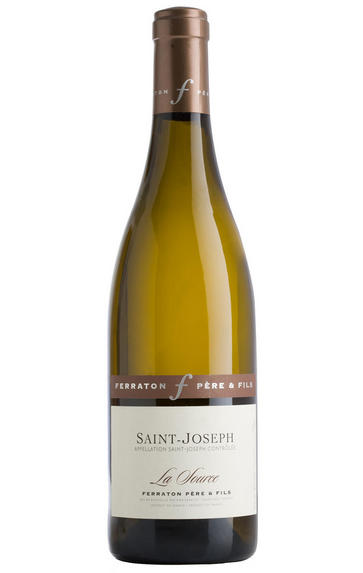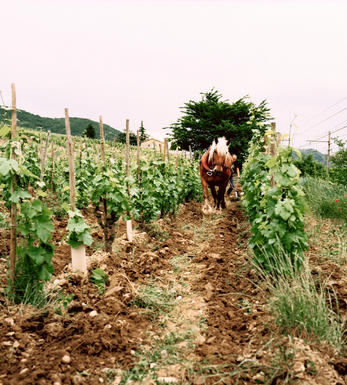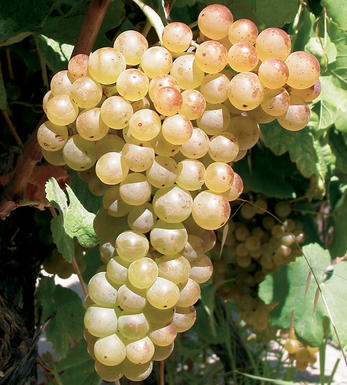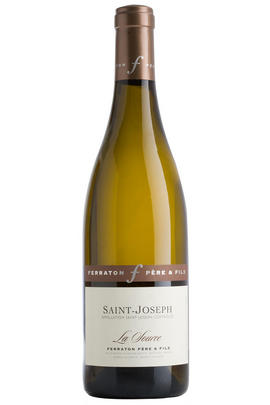
Critics reviews
The quality of Ferraton’s wines has been increasing with nearly every new vintage thanks to the efforts of Michel Chapoutier and his number one assistant, P.H. Morel, who has the responsibilities for these wines. I have included a few Southern Rhones that were not reviewed in Issue #203. Some of the 2011 white wines are in bottle, but the more serious cuvees are still in barrel. Ferraton produced four lieu-dit offerings in 2011, which I tasted with Michel Chapoutier and Pierre-Henri Morel.
Robert Parker, Wine Advocate #204, Dec 2012
The quality of Ferraton’s wines has been increasing with nearly every new vintage thanks to the efforts of Michel Chapoutier and his number one assistant, P.H. Morel, who has the responsibilities for these wines. I have included a few Southern Rhones that were not reviewed in Issue #203. Some of the 2011 white wines are in bottle, but the more serious cuvees are still in barrel. Ferraton produced four lieu-dit offerings in 2011, which I tasted with Michel Chapoutier and Pierre-Henri Morel.
Robert Parker, Wine Advocate #204, Dec 2012
About this WINE

Maison Ferraton
Maison Ferraton is a very fine Northern Rhône wine estate that was run for many years by Michel Ferraton. It is now run by Samuel Ferraton, the fourth generation of the family, who worked for a while in conjunction with Chapoutier frères. The firm has vineyard holdings in Hermitage and Crozes-Hermitage and its wine cellars are located immediately behind those of Marc Sorrel in the heart of Tain l`Hermitage.
Samuel Ferraton is very much an artisan winemaker- yet he employs many modern techniques that he picked up while working with the Chapoutiers.
Consequently, the wines are a marvellous marriage of the old and the new, displaying good structure and well-defined fruit characters, allied with very judicious and limited use of new oak. The wines are bottled unfined and unfiltered.

Saint-Joseph
Saint-Joseph is the second-largest appellation in the Northern Rhône with 50 growers producing wines from over 600 hectares of vineyards. Established in 1956, over 90 percent of the wine is red – made exclusively from the Syrah grape. The white wines, meanwhile, are typically a blend of Marsanne and Roussanne varieties. Its vineyards run due south on the west side below Condrieu, and are in six communes: Mauves, Tournon, St Jean-de-Muzols, Lemps, Vion and Glun.
The styles of wine in St Joseph tend to be much lighter than other red Appellations d'Origine Contrôlee and the quality can vary dramatically. The soils and climate differ, as it is a long, narrow AOC. There is no particular characteristic of the commune as some wines are produced near Côte-Rôtie, whilst others are near to Cornas.
The best St Josephs are still produced in the original heartland of the appellation between St Jean-de-Muzols and Mauves, where soils are predominately granitic with patches of limestone and schist. Typically, even the finest St Josephs are slightly lighter and faster-maturing than the wines of Hermitage, as Saint-Joseph's east-facing vineyards lose the sun up to two hours earlier in the crucial ripening season.
Recommended producers: Pierre Gaillard, Domaine Coursodon and Paul Jaboulet.

Marsanne
Marsanne is the predominant white grape variety grown in the Northern Rhône where it is used to produce white St. Joseph, Crozes-Hermitage, and Hermitage. It is a tricky grape to cultivate, being susceptible to diseases and being particularly sensitive to extreme climatic changes - if growing conditions are too cool, then it fails to ripen fully and produces thin, insipid wines, while, if too hot, the resultant wines are blowsy, overblown and out of balance.
In the Northern Rhône it tends to be blended with around 15% Rousanne and produces richly aromatic, nutty wines which age marvellously - the best examples are from Hermitage and particularly from Chapoutier. Increasingly it is being grown in the Southern Rhône and Languedoc Roussillon where it is bottled as a single varietal or blended with Roussanne, Viognier, and sometimes Chardonnay. It is also grown very successfully in Victoria in Australia where some of the world`s oldest Marsanne vines are to be found.



Buying options
Add to wishlist
Description
Stunning value here from Ferraton who are storming the wine world at present. Dense, appealing nose, ginger, star anise, melon, citrus and jasmine. Smooth, medium body with a mealy, mineral, flinty, grippy finish. Brilliant alone or with white meats / seafood. Drink now – 2015.
Hamish Orr-Ewing, Private Account Manager
This relatively junior cuvée, made of 100% Marsanne, has always stood out at tastings. It has a classic gunflint nose (typical of granite soils) then a richly textured palate with notes of citrus fruit, nectarine and spring flowers to the fore.
Simon Field MW, BBR Buyer
Ferraton is owned by Chapoutier, but run as an autonomous entity. For a long time it seemed to underperform, almost as if shocked in the headlights of the energetic charisma of its benefactor. The potential of the vineyards, some of which are located on the very best sites on the Hill of Hermitage, has never been disputed. Now, with Bordelais winemaker Damien Brisset firmly in control, one begins to see, at last, the realisation of potential. I am pleased to have ‘stuck with’ them over the years, as the maturing vintages seldom fail to please and the quality of the current vintage gets better and better.
wine at a glance
Delivery and quality guarantee